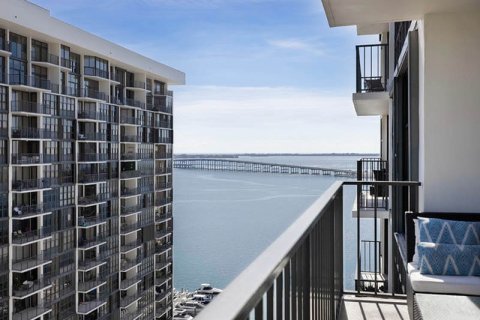
In 2022, the Florida Legislature passed a series of laws that concern almost 1.5 million condominiums across the state and 28,000 homeowner associations that are authorized to control real estate. The changes include strict rules regulating the composition of multi-family houses, timelines of conducting structural inspections, as well as budget and reserves management.
The new legislation brought a lot of trouble for some residents and associations that had to start expensive renovations as the deadlines loomed nearer. The ageing condominiums are facing particularly severe challenges as they approach functional obsolescence, which makes the land they stand on more valuable than the buildings.
In some cases, associations circumvent the new laws by selling all of their property. This trend increases the inventory of available land and expands the opportunities of developers and investors who close deals in Florida, explains Carter N. McDowell, a representative of Bilzin Sumberg's Land Development & Government Relations Group.
Record-breaking population growth sparks a hunt for land plots for development
As a peninsula surrounded by water on three sides, Florida is a market with limited land resources, and the number of available land plots for development is not growing. This land shortage is exacerbated by an influx of new residents. The US Census Bureau reports that 320,000 Americans moved to Florida in 2022, which is more than to any other state.
This population growth boosts the historic demand for residential and commercial properties in communities across Florida, so obsolescent condominiums that badly need renovation are being targeted by developers from other states looking for an opportunity to enter the market.
Real estate publicly listed for sale usually generates severe competition, but finding non-listed condominiums whose residents will be ready to sell their share is part art, part science, thinks Anthony De Yurre, a representative of Bilzin Sumberg’s Land Development & Government Relations Group.
As per the laws adopted in 2022, every Florida condominium older than 30 years must undergo a structural inspection conducted by a certified engineer. The results of the survey must be presented to the local municipality. These reports eventually become public knowledge and a valuable source of information.
Careful analysis of these engineering reports combined with profound understanding of local land use and zoning permits make it possible to identify which properties deserve attention, explains Anthony De Yurre.
Investment opportunities go far beyond the waterfront
Many condominiums have been recently demolished in South Florida, primarily in premium waterfront areas that will be redeveloped with luxurious homes or hotels.
A more careful consideration of Florida’s derelict condominiums, however, shows that many of these properties are located far from the coastline. In many cases, old properties in the inland part of the peninsula can be purchased at a low price per unit, taking a more flexible approach to zoning.
Many buyers have been focusing on the coastline, but the mainland often has great opportunities too, says Sara Barli Herald, a representative of Bilzin Sumberg's Land Development & Government Relations Group, who focuses on public-private partnership, affordable housing, and land development.
Purchasing inland properties at a lower price, be they areas designed for affordable and market housing, offices, or shops, may prove to be a more lucrative long-term investment strategy. The key to profit maximization is the understanding of what can be built and at what price before the purchase, Ms. Herald adds.
